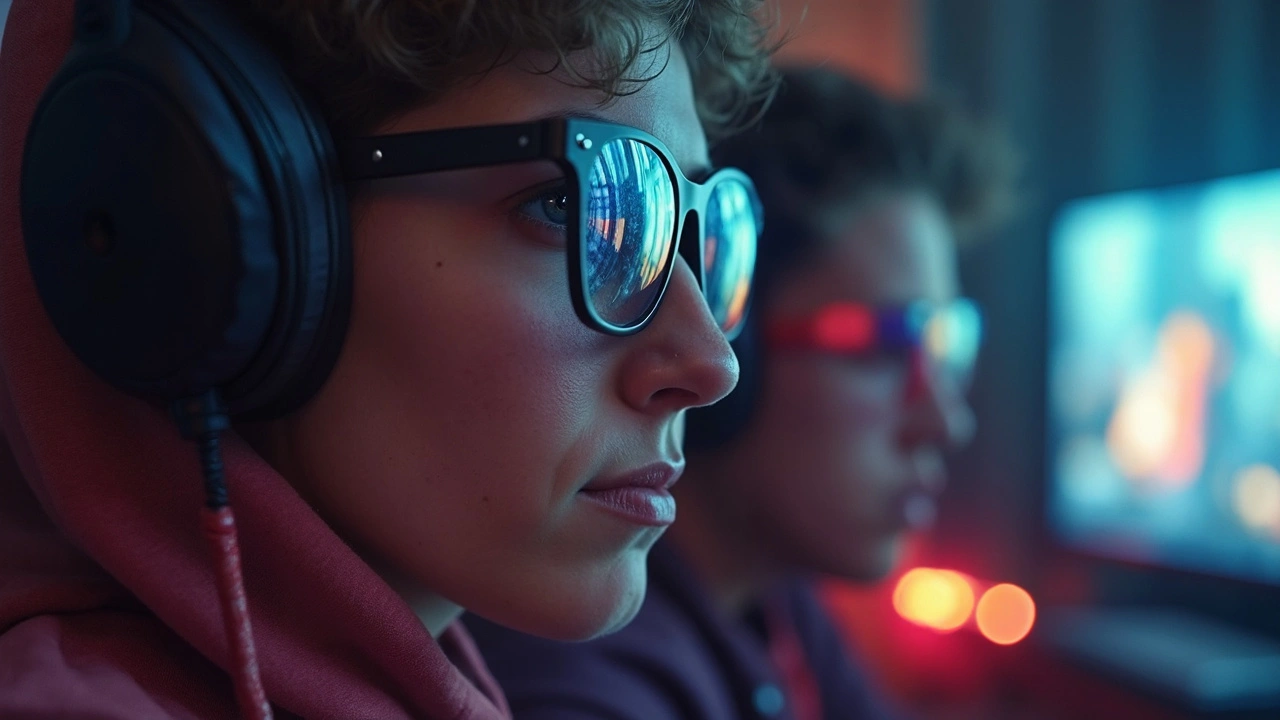Ever found yourself avoiding TV commercials but eyeing the virtual billboards while racing through Los Santos in GTA V? Or maybe you bought that energy drink in real life after seeing it showcased in FIFA. Marketers are quietly slipping ads into the world’s most popular video games, not just to grab attention but to change how entire industries think about connecting with audiences. Those pop-up banners used to be obvious, but today’s in-game ads are sneaky, seamless, and wildly effective. The secret’s out—video games aren’t just for entertainment; they’re one of the smartest places to reach people under 40, and almost nobody is immune.
The Evolution: From Clumsy Billboards to Slick Brand Partnerships
If you remember the pixelated days of the original PlayStation, in-game ads looked about as real as cardboard cutouts. Fast forward to 2025, and it’s a whole different world. Studios aren’t just plopping logos into backgrounds—they’re weaving brands directly into the action. Early experiments were laughably blatant. Anyone remember the billboards for Axe body spray in "Splinter Cell: Chaos Theory"? Players would joke that you could almost smell the marketing pitch. Back then, it was novelty over subtlety.
But advertisers got smarter—and so did the games. By 2019, deep partnerships started to emerge. In "Death Stranding," Monster Energy drinks weren’t just an Easter egg; they were part of the core gameplay (more stamina from real-world drinks, anyone?). Sports games have been ahead of the curve, from the Gatorade-branded replays in NBA 2K to digital sneaker drops that sell out in minutes, both in-game and for real-world releases. These collaborations work because they offer something tangible for the player—extra perks, exclusive cosmetics, or bragging rights.
What’s wild is how natural it’s starting to feel. Open-world games like "Fortnite" and "Grand Theft Auto Online" host virtual concerts, movie premieres, and product launches. Players might show up for the action, but they also get peppered with branded skins, billboards, and custom missions from everyone from Nike to Netflix. The secret sauce isn’t just slapping a logo onto a wall; it’s making brands part of the story.
This is more than clever product placement. Game makers use sophisticated data tools to see what works, how long players interact with branded content, and whether they chase down a virtual Mountain Dew because of what they saw. If it all sounds seamless and almost invisible—well, that’s the point. Players don’t just see the ad; they wear, drink, and interact with it, blending the brand into their experience so well that a 2023 Adobe survey found nearly half of frequent gamers remembered a brand they saw in a game, often more than on social media or TV.
Why Brands Love In-Game Ads (and Why They Work Better than TV)
Old-school marketing is great at noise, but not at getting attention. TV commercials? Most of us buzz right through them or just check our phones. Banner ads? Instantly ignored. But gaming is a captive audience. Players are locked in—sometimes for hours, often more emotionally invested than when they’re scrolling Instagram. That’s pure gold for advertisers.
Take the numbers: as of 2025, gaming isn’t just a hobby; it’s the world’s biggest media business. Globally, more people game than have Netflix subscriptions, cable TV, and even movie theater attendance—combined. The Entertainment Software Association reported last year that gamers now range from pre-teens to retirees, with the biggest jumps seen in women aged 25–40. That’s a massive, diverse, and fully digital crowd.
Why do in-game ads hit harder than old-school ones? First, there’s the targeting. Advertisers use anonymized player data—age, playtime, game type—to match brands to likely buyers. A shoe company isn’t blasting their new sneakers to just anyone; they’re targeting digital ballers in NBA 2K who play every Friday night. And since interactive ads can be tracked in real time, brands know exactly what gets clicks and what falls flat.
Plus, the ads themselves don’t feel like interruptions. When you see a Red Bull ad on a Formula 1 car in "F1 23," your brain just accepts it as part of racing culture. Compare that to a pop-up on YouTube—one breaks the mood, the other actually adds realism. Players report feeling more positive about brands that show up naturally in their favorite games, especially if there’s a reward or freebie attached—think bonus points for watching a trailer, or unlockable gear tied to a branded in-game event.
One surprise? Gamers aren’t as ad-averse as people think. In fact, as long as the ad is relevant and doesn’t ruin their fun, most are fine with it—and some even enjoy it. Research by Newzoo in 2024 found that 71% of Gen Z and Millennial gamers said in-game ads made worlds feel more real, not less. Results like these have made game studios hungry for more partnerships, leading to ad budgets previously reserved for the Super Bowl shifting toward gaming platforms.

The Dark Side: Privacy, Overload, and the Blurred Line
The ride isn’t all smooth, though. As brands get smarter about tapping into player data, privacy questions start cropping up. Most ad networks claim they only use anonymized trends—not your specific chat logs or DMs—but plenty of gamers are still nervous. Who wants to feel like their every click and mission is feeding a faceless marketing machine?
There’s also the risk of overload. The last thing players want is their favorite game to start looking like Times Square on New Year’s Eve. Push it too far, and players start tuning out—or, worse, ditch the game. EA Sports caught some heat in 2021 when "UFC 4" slipped in video ads during instant replays. Players rebelled on Reddit until EA rolled them back and apologized. The lesson? Even clever ads need boundaries.
And what about kids? Many blockbuster games attract millions under the age of 16, a group governments love to regulate. Europe cracked down on loot boxes (a cousin to microtransactions), fearing they looked too much like gambling. Now, watchdogs are eyeing how brands target teens, debating stricter rules for advertising junk food, energy drinks, and other products kids see in their digital playgrounds.
On top of that, there’s something strange about how real and virtual have merged. During the 2024 FIFA World Cup, Coca-Cola didn’t just sponsor in real-life matches—they ran parallel promotions in "FIFA 24," letting you win prizes that arrived at your home. For some, it’s fun. For others, it feels a bit too much like The Matrix, leaving people wondering if the game’s still for play or mostly for profit.
No surprise, then, that big studios are tiptoeing around these issues. Most now offer opt-outs or at least let players decide if they want "personalized ads". But as tech advances—think VR and AR headsets, which make ads feel even more immersive—the tensions are only ramping up. How will players react when sponsored messages pop up in their real-world living rooms through their headset? Testing is happening as you read this.
Tipping the Scales: Tips for Brands (and Players) to Win with In-Game Ads
If you’re a marketer hoping to make the most out of digital advertising in games, subtlety rules. The best results come from working with game makers early, designing content that feels like a piece of the story rather than an invasive banner. Co-created rewards—exclusive stats boosts, digital swag, or time-sensitive promotions—hit hardest. Players want something back for their time; otherwise, you’re just in the way.
It helps to actually play the games your audience loves. Brands that jump into gaming just to cash in stick out—a Doritos skin in Minecraft only makes sense if you know the context. When Mercedes-Benz showed up as a drivable car in "Mario Kart 8" back in 2014, traditional ad folks mocked it, but players loved it for its quirkiness and fit for the game’s vibe. Respect the culture, and gamers respect your brand.
For players, keeping ads from ruining the fun takes a little vigilance. Most platforms now offer ad setting controls, similar to how you manage cookies on Netflix or YouTube. Take five minutes to poke around your game settings—opting out of hyper-targeted ads or setting limits is usually a hidden feature. For games where real-world rewards or sweepstakes pop up, keep an eye on terms and conditions, especially if you’re underage or buying in-game currency.
Watch for new ad types, too. Dynamic in-game ads—virtual billboards that change based on real-life events (ever see a Coke ad in "NBA 2K" update mid-season?)—are getting more popular and sophisticated. Soon, you might see weather-triggered offers in open-world games (free pizza coupon if it’s raining in your zip code!). Testing these out can land you unexpected perks, so don’t always skip them.
For both sides, transparency pays. When brands get creative and honest—no tricks, no hijacking—players reward them with actual attention and sometimes even cash. The most buzzed-about campaigns of 2024 were those that felt like Easter eggs or community events, not just another commercial break. If you’re a marketer, partner up with developers who put players first. If you’re a gamer, don’t be afraid to give feedback—believe it or not, the studios are reading Reddit threads and Discord servers for ideas on making ads less annoying and more rewarding.
The rise of in-game ads isn’t slowing down. Love it or hate it, brands have never been closer to gamers, and nowhere else can $1 million buy as much attention and influence as on a gaming livestream or inside a digital world. With some smarts (and a little restraint), the ad invasion might just become the best thing to ever happen to both sides.





